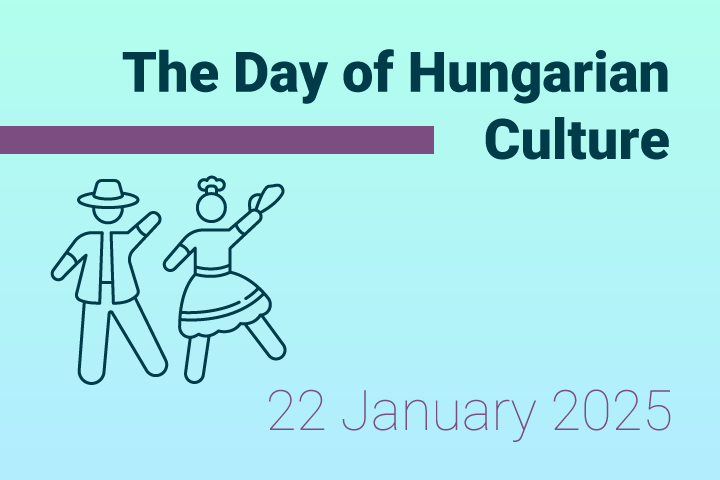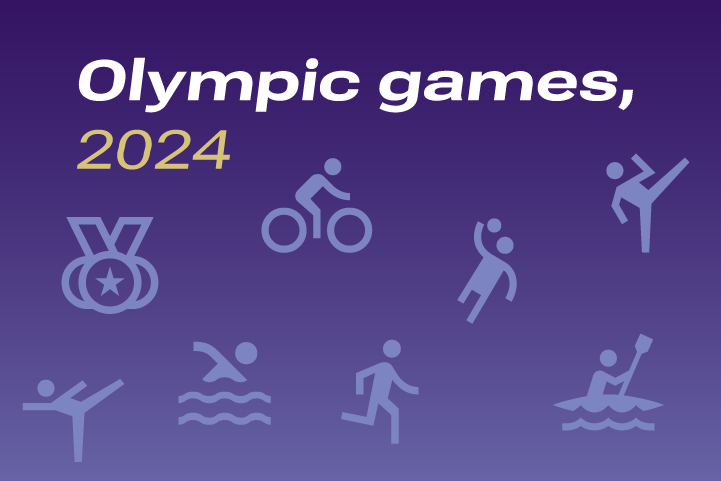Culture
Culture contributes to the competitiveness of the society by strengthening the foundations of a knowledge-based society, in which the development of public culture and community development also play an important role. Cultural statistics includes the measurement of areas dealing with the cultural activities of society (e.g. theatre, cinema, museum, library, mass media, book production, etc.), the communication of data on cultural spending and funding.
Key figures
Budgetary expenditure on culture as a percentage of GDP
Indicator description
These expenditures include the ones on books, music and journal publishing, radio, television broadcasting, cultural activities, artistic activities, zoological and botanical gardens, national parks, historic landmarks, as well as other entertainment and cultural activities.
Source of data:
Summary Tables (STADAT)
Last data for period: 2023
Number of theatre visits per thousand inhabitants
Indicator description
Number of theatre visits per thousand inhabitants. When determining the number of theatre visits, every visitor is taken into account as many times as many performances he/she attended. The indicator meaures the number of thetre visits per thousand inhabitants.
Source of data:
Summary Tables (STADAT)
Last data for period: 2023
Number of museum visits per thousand inhabitants
Indicator description
When determining the number of museum visits, every visitor is taken into account as many times as many exhibitions he/she attended.
Source of data:
Summary Tables (STADAT)
Last data for period: 2023
Number of published books, booklets
Indicator description
Published book: a work prepared by printing or other means of reproduction having min. 49 pages, which is included in the National Bibliographies and made available to the public. Published booklet: a work prepared by printing or other means of reproduction having 4–48 pages, which is not published periodically and is made available to the public. Re-prints of a book are considered as separate publications.
Source of data:
Summary Tables (STADAT)
Last data for period: 2023
Featured
HCSO Monitor
The collection of interactive figures provides up-to-date information on the latest domestic and international socio-economic trends. The decisive part of the figures included in HCSO Monitor are downloadable in both image and data formats (PNG, SVG and CSV). Feel free to browse the data in HCSO Monitor, updated many times a week!
World Theatre Day, 27 March 2025
A stage performance is not only entertainment but also the guardian and mediator of the cultural values and identity of a community, region or nation. In Hungary, the overall attendance at the 240 national theatres rose to 6.9 million in 2023 (by 10%). Similar to the previous year, 1.6 million people attended the performances of the 11 nationally accredited theatre arts organisations, with the National Circus Arts Centre, the Hungarian State Opera House and the Budapest Operetta Theatre attracting the highest attendance (together almost 900,000 visitors).
15 March – Hungarian Press Day
15 March is not only the holiday of the 1848 Revolution but has also been Hungarian Press Day since 1990. The first free Hungarian printed matter was printed then in 1848. In Hungary, the number of copies of printed daily papers peaked before the change of regime, approximating 1 billion in annual totals. Due to digitalisation and to changes in the customs of obtaining information, the total number of copies of printed daily papers was only 150 million in 2023, and the place of formerly leading broadsheet newspapers was taken by tabloids.
Best in movies, 2024
The first movie screening took place about 130 years ago in Hungary, and it may be said that movie going is still very popular in the country. According to the latest, 2023 data, there were 152 movie theatres in Hungary, 128 indoor and 24 outdoor cinemas. The number of outdoor movies grew since 2019 by seven. The so-called multiplexes offered a total of 29 thousand seats, 41% of the total capacity.
22 January, the Day of Hungarian Culture
We have been celebrating the Day of Hungarian Culture on 22 January since 1989 to commemorate that - according to the manuscript - Ferenc Kölcsey completed his poem Hymnus, a’ Magyar nép zivataros századaiból (The Hymn from the stormy centuries of the Hungarian people), the national anthem of Hungary, on this day in 1823. The commemorations related to the anniversary, both domestically and abroad, provide an opportunity to pay attention to our millennial traditions and to strengthen our national consciousness. In 2023, the number of communities operating in public cultural institutions and venues, which nurture our spiritual and material values, reached nearly 200 thousand.
Busójárás of Mohács, winter sending-off, spring welcoming festival
The Carnival season starts on 6 January every year and lasts until the day before Ash Wednesday, the 40th day preceding Easter. This period is all about merriment, balls, cheerful feasts. The Busójárás of Mohács is one of the best known among the numerous traditions in Hungary, where winter is ousted by the parade of specific masks and fur wearing people (Busós) and by lighting bonfires. The 2025 Busójárás is going to take place between 27 February and 4 March.
Snapshots, 2023 – Culture
About 16 thousand works (books and brochures) have been published in 2023, the number of issues came close to 37 million. Every third volume was written by a foreign author. In case of cinemas, the number of those with one auditorium decreased, the larger ones and open-air cinema numbers grew in five years. The number of seats tend to concentrate in the 8 or more auditorium multiplexes; these represented 34% in 2019 and by 2023 gave 41% of the total capacity of cinemas in Hungary.
Statistical Yearbook of Hungary, 2023
The yearbook provides an overview of Hungary's demographic, social and economic processes, environmental characteristics and their changes over time, with the help of tens of thousands of data of 500 tables, graphs and maps. Innovatively, the Tourism, catering chapter in the volume includes the gross receipts of tourist accommodation establishments by type of accommodation. Another change is that this year the Regional data chapter already presents territorial data by tourism area, giving greater emphasis to tourist destinations.
Settlement and district related data regarding 2022 are presented here
Datasets from the Dissemination Database regarding settlements and Budapest’s districts have been updated with 2022 data, as such settlement and district related data for 2022 are available since 31 August, concerning, among others, data on cinemas.
Related themes
Methodological information
Publications |
Released |
|---|---|
| Hungary 1st-3rd quarters of 2024 | 09/01/2025 |
| Regional Statistical Yearbook of Hungary, 2023 | 27/11/2024 |
| Hungary, 1st semester of 2024 | 14/10/2024 |
| Statistical Yearbook of Hungary, 2023 | 29/08/2024 |
| Hungary, 2024 Q1 | 26/08/2024 |
| Hungary, 2023 | 27/06/2024 |
| Statistical Pocketbook of Hungary, 2023 | 27/05/2024 |
| Hungary, quarters 1-3 of 2023 – On the path of disinflation | 10/01/2024 |
| Regional Statistical Yearbook of Hungary, 2022 | 17/01/2024 |
| Hungary, 1st semester of 2023 – disinflation started | 19/10/2023 |
| Statistical Yearbook of Hungary, 2022 | 23/11/2023 |
| Hungary, 2023 Q1 | 30/08/2023 |
| Statistical Pocketbook of Hungary, 2022 | 14/06/2023 |
| Hungary, 2022 | 28/06/2023 |
| Hungary in figures, 2022 | 11/07/2023 |
| Hungary, Quarter 3 2022 | 06/02/2023 |
| Regional Statistical Yearbook of Hungary, 2021 | 10/01/2023 |
Dissemination database ( infra-annual data annual data ) |
Latest update | Next update |
|---|---|---|
Radio and TV broadcasters | ||
| Broadcasting time in hour | 05/09/2024 | 09/09/2025 |
| Broadcasting by languages | 05/09/2024 | 09/09/2025 |
| Programme service | 05/09/2024 | 09/09/2025 |
Book production | ||
| Juvenile and children's literary | 23/04/2024 | 24/04/2025 |
| Books and booklets by published language | 23/04/2024 | 24/04/2025 |
| Books and booklets by nationality of author | 23/04/2024 | 24/04/2025 |
| Number of books and booklets by number of copies | 23/04/2024 | 24/04/2025 |
| Books and booklets by subject | 23/04/2024 | 24/04/2025 |
| Literary works by genre | 23/04/2024 | 24/04/2025 |
| Types of publication | 23/04/2024 | 24/04/2025 |
| Schoolbooks by educational level | 23/04/2024 | 24/04/2025 |
Cinema, films | ||
| Feature-length films | 18/10/2024 | 16/10/2025 |
| Traffic data of cinemas | 18/10/2024 | 16/10/2025 |
| Number of screens in cinemas | 18/10/2024 | 16/10/2025 |

























